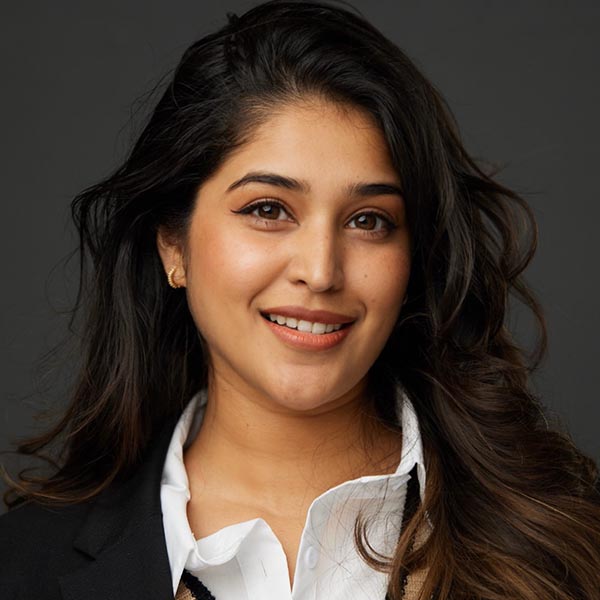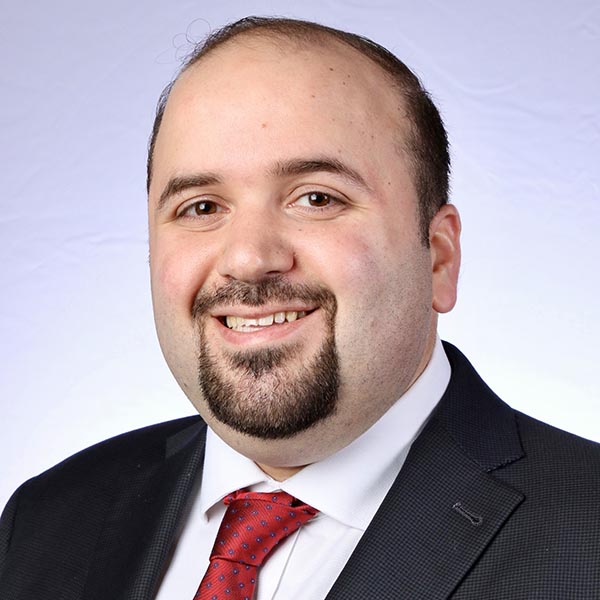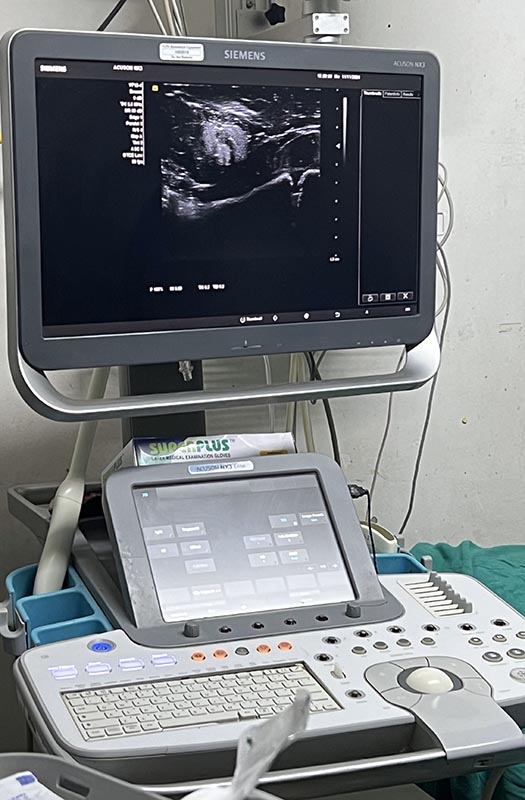Mercy Fitzgerald residents complete medical missions in Nepal and Syria
June 5, 2025Categories: Blog Posts
Two residents of Mercy Fitzgerald Hospital’s radiology department are making a positive impact on breast cancer patients overseas.
Rajshree Singh, MD, of Nepal, and Basem Jaber, MD, of Syria, recently completed medical missions in their respective home countries. Utilizing their expertise, they taught dozens of Nepali and Syrian health care workers about the importance of preventive screening mammograms and how to complete a breast biopsy, both of which can help save patients’ lives.
Mission to Nepal
 Radiology resident Dr. Singh is no stranger to addressing the health care needs of patients around the world. Prior to joining the residency at Mercy, she worked as a simulation instructor, traveling through the foothills of the Himalayas and teaching rural midwives and nurses about neonatal resuscitation and post-partum hemorrhage management. In 2015, as a medical student, she also volunteered at a health camp in Nepal after a devastating earthquake took almost 9,000 lives.
Radiology resident Dr. Singh is no stranger to addressing the health care needs of patients around the world. Prior to joining the residency at Mercy, she worked as a simulation instructor, traveling through the foothills of the Himalayas and teaching rural midwives and nurses about neonatal resuscitation and post-partum hemorrhage management. In 2015, as a medical student, she also volunteered at a health camp in Nepal after a devastating earthquake took almost 9,000 lives.
After learning about breast biopsies during her residency, Singh knew that she could do even more for the providers and patients of her home country.
“I got some expired equipment from the mammography and interventional radiology departments that we commonly use in the diagnosis of any suspicious breast mass. I wanted to teach the trainees over there image-guided procedures, so I decided to train them on ultrasound-guided breast biopsies,” says Dr. Singh.
She hosted two sessions at two hospitals in Kathmandu, the capital of Nepal, that were attended by dozens of residents who were excited to learn. Dr. Singh got creative, using a chicken breast stuffed with olives to mimic a human breast and suspicious masses inside of it. During these biopsy masterclasses, attendees received hands-on training in using ultrasound to find the masses and techniques to remove them.
Hospitals in Nepal are often short-staffed, explains Dr. Singh. This means that sometimes, residents have no choice but to try their hand at a procedure for the first time on a patient, not a model/phantom.
“A lot of times, it’s the situation that really trains them and puts them in that place where they have to do it because no one else is there to do it, and they’re the most qualified person in the room,” says Dr. Singh. “So it’s very important that they be prepared for that.”
Mission to Syria
 Dr. Jaber, who graduated from a Syrian medical school in 2016 and moved to the U.S. in 2017 to continue his education, was honored to return to his home country, which has experienced civil unrest for more than a decade.
Dr. Jaber, who graduated from a Syrian medical school in 2016 and moved to the U.S. in 2017 to continue his education, was honored to return to his home country, which has experienced civil unrest for more than a decade.
“During that time, medical resources got very depleted and everything was going downhill until things changed in December 2024, literally six months ago,” says Dr. Jaber. “When things changed in Syria, I wanted to go back there and help with things I learned here in the United States.”
Syria, explains Dr. Jaber, does not have dedicated breast imagers and screening mammograms are not the norm for women. To prepare Syrian health care workers as best as possible to care for breast cancer patients, Dr. Jaber brought over a few expired biopsy needles and a silicone phantom that contains different sized masses, allowing them to receive hands-on training before working directly with patients.
He hosted two sessions, one at Homs University Hospital and the other at Hama University Hospital, each of which had approximately 30 attendees. Dr. Jaber spent the first 20 minutes providing a lecture on how screening mammograms save lives. Then, over the span of about four hours, he used the phantom to demonstrate how to scan a breast and target masses with the needle. Everyone tried at least once—some even tried two or three times – while Dr. Jaber observed and mentored.
“The mission was to not only do the hands-on and knowledge part. I want them to spread the knowledge of screening mammograms, how to detect early breast cancer,” says Dr. Jaber. “We don’t want women to come with stage 3 or stage 4 breast cancer that’s already metastasized everywhere and it’s too late to treat. I want them to come for a screening. I want them to come asymptomatic with nothing and detect it as early as we can, just like we do here in the United States.”
Lessons learned
 Drs. Singh and Jaber may have been the instructors, but they took some valuable pieces of wisdom back to their blossoming careers in America. For Dr. Singh, the resilience and commitment to give quality care—despite cramped conditions, limited health insurance and expensive equipment—stuck with her.
Drs. Singh and Jaber may have been the instructors, but they took some valuable pieces of wisdom back to their blossoming careers in America. For Dr. Singh, the resilience and commitment to give quality care—despite cramped conditions, limited health insurance and expensive equipment—stuck with her.
“There was always a strong camaraderie. They were always smiling no matter the adversity. In the U.S., a minor inconvenience might get me overwhelmed,” says Dr. Singh. “But suddenly, my problem seems very small. They’ve brought a lot of optimism to my life.”
For Dr. Jaber, he applauded their craftiness and ability to do a lot with limited resources.
“You can always find solutions for your problems, even if the best and highest-quality thing is not available,” he says.
Both Drs. Singh and Jaber know that this is only the beginning of their medical mission journeys. They hope to bring their passions for imaging and women’s health to more hospitals in their home countries and around the world.
In the meantime, they remain in contact with those who attended their training sessions. Dr. Singh is exploring creative ways—including 3D printing—to give them access to phantoms and more practice opportunities, while Dr. Jaber reviews cases sent to him from Syria and gives his opinion on whether a biopsy should be completed. Additionally, both were able to leave some equipment behind, allowing these hospitals to expand their breast imaging capabilities.
“They really appreciate any kind of help. I really encourage anyone who’s interested in medical missions to help people in third world countries,” says Dr. Jaber. “In Africa, in Asia, in the Middle East, there will always be ways to help.”
“It might seem small to you, but it makes a really big impact on their life,” adds Dr. Singh. “I think it made me a better physician. It made me more compassionate. That’s why I signed up for this job. Every time I go and do global health, I come back with a new motivation to do what I’m doing.”
